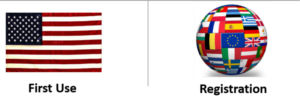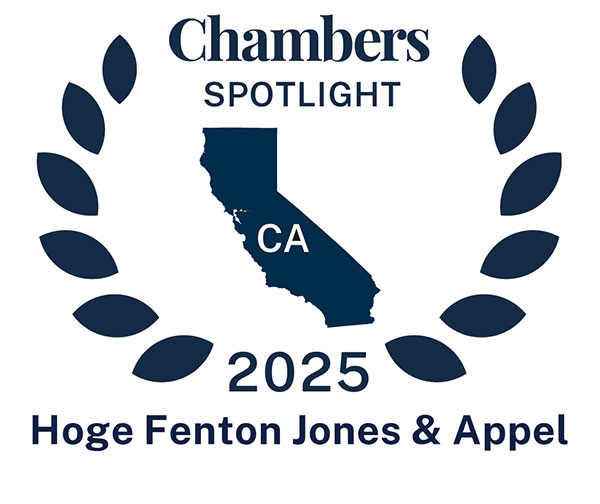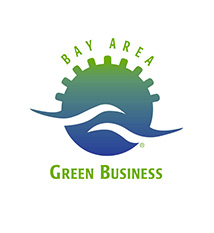Protect Your Brands in Overseas Markets
By Dana Brody-Brown | 01.12.2018 | Firm Post
 |
| You probably have heard about certain famous brand holders encountering difficulties using and registering their trademarks abroad. For example, you may have heard that Apple paid $60 million to settle a dispute with a third party in China that allows Apple to sell its “iPAD” products in China in light of an earlier third party registration. Or you may recall that Michael Jordan had to engage in a long legal battle with a trademark squatter over rights to the Chinese version of his name and trademark. If Apple and Michael Jordan are facing these issues, how does a small or mid-sized company stand a chance? An understanding of the potential issues and attention to IP planning and protection can be your first line of defense. What follows are FAQs about international trademark protection and preliminary answers and food for thought. |
| Do I need to register my company’s marks internationally? | If your company is selling products or services outside of the US, you likely need international trademark protection to open your markets and to keep them open. |
| Or else, what could happen? | Your company could be prevented from selling its goods/services under the mark in important markets which might necessitate re-branding, either in the country of interest or globally. Or, your company could find itself paying a large sum of money just to use its own mark in an important market. |
How are TM Rights Developed?
 |
| In the United States, rights in trademarks are developed primarily through use, so the first party to use a mark for particular type of goods or services has priority. In most other countries around the world, rights in trademarks are developed primarily through registration. Therefore, if a third party beats you to the Trademark Office, they often will have superior rights.
You should know your prospects for registration in any significant markets before you adopt a mark, which is why international searching can be important. International search also can be costly, and your trademark counsel should be familiar with various searching options and your company’s tolerance for risk. |
| Where do I need to search and register? | International trademark searching is always a good idea, but since trademark rights are territorial, searching in all countries of interest can quickly become cost prohibitive. Work with experienced and strategic trademark and brand counsel to help craft an international search strategy that works for your business. As for where to search, you should be asking yourself, “Which are my most important current and anticipated international markets? If I suddenly couldn’t ship products into X country, how much would it hurt my business?” That is one way to prioritize the most important markets in which to search and file.
Other considerations include: which countries are first to file/register (most) versus first to use, in which countries do brand owners experience significant counterfeiting and need to enforce rights in their trademarks, and where does significant “trademark squatting” (registrations by unrelated parties of trademarks for profit) occur. |
| How to file? | There are different methods for filing foreign trademark applications. The traditional method is a national trademark filing through local counsel in the country of interest. A good option for some marks may be Madrid Protocol filings- a centralized filing method for filing in multiple countries based on a home country application. Here again, experienced trademark counsel can help you determine which approach is best for your company and its marks depending on your business needs. |
| When to file? | International trademark applications may be filed at any time. There are advantages, however, to filing within 6 months of the initial (often home country) application for a particular mark. Specifically, applications filed within the first 6 months of the initial application may be granted a priority date based on that initial application date. |
| How broadly to file? | Some companies prefer to file outside of the US first to claim a very broad identification of goods and services (broader than can be claimed in the U.S.) and then start an international filing project based on that broad id. Other companies prefer to focus their coverage on the real goods and services of interest and start their filings in the US, particularly if the US is their biggest market. Both approaches have their pros and cons, and the approach selected will depend on the company size, risk tolerance, and budget, as well as the strength of the mark and results of clearance searching. Approaching filing strategy and scope of coverage issues is a very fact-specific endeavor, and by no means does one size fit all. |
| What about International Enforcement? | Make sure your trademark counsel has experience directing overseas enforcement and has a strong network of reliable local counsel in the relevant countries. Increasingly, trademark disputes are multi-jurisdictional, so you need a professional who can manage these disputes with experience, creativity, and efficiency. |
 |
Dana Brody-Brown is an attorney with Hoge Fenton in San Jose. With more than 15 years practicing in the trademark and brand protection area, Dana has a special interest and wealth of experience in assisting growing companies in developing and managing international trademark portfolios. For questions, call Dana at 408.947.2433 or email dana.brody-brown@hogefenton.com. |
The Fine Print.
This article is provided as an educational service by Hoge Fenton for clients and friends of the firm. This communique is an overview only, and should not be construed as legal advice or advice to take any specific action. Please be sure to consult a knowledgeable professional with assistance with your particular legal issue.









